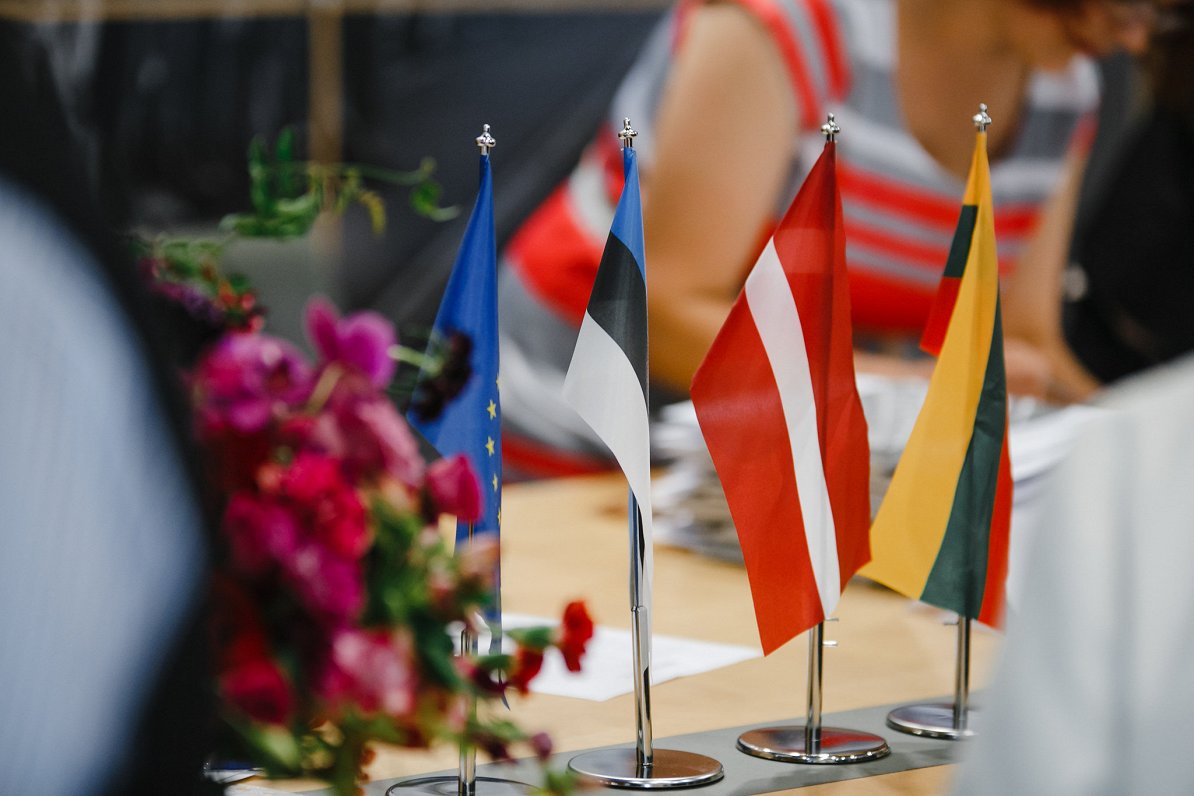The Covid-19 coronavirus pandemic caused not only a global health crisis but also a global economic downturn. 2020 was also a difficult year for the Baltic economies. The gross domestic product (GDP) of Latvia, Lithuania and Estonia shrank last year, but not to the level predicted at the beginning of the pandemic. Analysts said the pandemic has also contributed to healthy economic processes that could contribute to development in the future.
The Baltic economies have weathered the crisis caused by Covid-19 relatively successfullyUldis Ķezberis00:00 / 04:41
—
In April last year, the International Monetary Fund (IMF) forecast a significant decline in GDP for the Baltic States in 2020. The deepest economic downturn – 8.6% – was forecast for Latvia. Lithuania was projected to decline by 8.1% and Estonia by 7.5%.
But the gloomy predictions did not come true. In Latvia, GDP decreased by 3.6% last year, in Estonia by 2.9%, and in Lithuania by 1.3%.
The Bank of Latvia’s economist Irēna Emīlia Švilpe said that in 2020 the Baltic States suffered one of the smallest losses among the European Union (EU) member states.
“Despite the widespread outbreak in the Baltics at the end of the year, they still did not impose as severe physical restrictions as, for example, Italy or France. As a whole, the Baltics performed better on average in 2020 than other eurozone countries and ranked less affected. countries in the euro area, ”said Švilpe.
She pointed out that the decline in GDP in Latvia was mainly due to the dramatic decline in private consumption.
This can be explained by the bitter experience of the population of our country during the previous financial crisis, therefore Latvians are more cautious about spending.
Pēteris Strautiņš, an economist at Luminor Bank, listed two main reasons why Lithuania had the smallest GDP decline in the Baltic States in 2020.
“One of them, the Lithuanian government, was the most active stimulator of the economy last year. They spent a huge amount of money. This was due to the fact that parliamentary elections took place in Lithuania, and before that money flowed like a trench. The economy was actively supported until “The decline in consumption was quite small. It was probably very expensive for Lithuania in terms of money, but the decline in economic activity was smaller,” Strautiņš pointed out.
The second reason – in Lithuania, the transport sector suffered less than in Latvia and Estonia, Strautiņš said: “In Estonia, it was very impressive that the ferry traffic almost stopped or was severely reduced. This is a very, very big industry for them. In turn, aviation is a very large industry in Latvia. In Lithuania, the largest transport export sector is road transport, but they did quite well last year. If tourism was very badly affected, then the production and export of goods did not suffer so much. For Lithuanians, it was partly a political merit, but partly they were lucky. ”
The Bank of Latvia’s economist Švilpe believes that the pandemic made it possible to see the light and dark sides of the national economies better.
“The light sides helped economies better cope with the downturn and the slowdown caused by the virus, while the dark sides exacerbated the economic downturn,” Švilpe said.
Strautiņš drew attention to the fact that the structure of the economy in the Baltic States has changed over the past year, which allows us to look to the future with optimism. As a feature of our region, the economist highlighted the increase in exports of so-called white-collar services.
“First of all, business outsourcing, programming. These industries continued to grow. In addition, the growth of exports of information technology services in Lithuania even accelerated.
Latvia was slowing down, but still developing positively. In Estonia, too, the share of these sectors in the economy will have increased. These are dynamic industries, so it is good news, “Strautins said.
The European Commission’s (EC) forecasts for economic growth in 2021 show that Latvia could have the highest GDP growth in the Baltics. The EC estimated that the Latvian economy will grow by 3.5% this year, in Estonia by 2.6%, and in Lithuania by 2.2%.
EC forecasts and already available data for January and February suggest that the first quarter of the year may be weaker for the Baltic economies, but in the second quarter, with the increase in vaccination rates and lower rates of virus infection, economic recovery can be expected, Švilpe thinks.
–
Highlight text and press Ctrl+Enterto send the text to be edited!
Highlight text and press Report a bug buttons to send the text to be edited!
–
–


